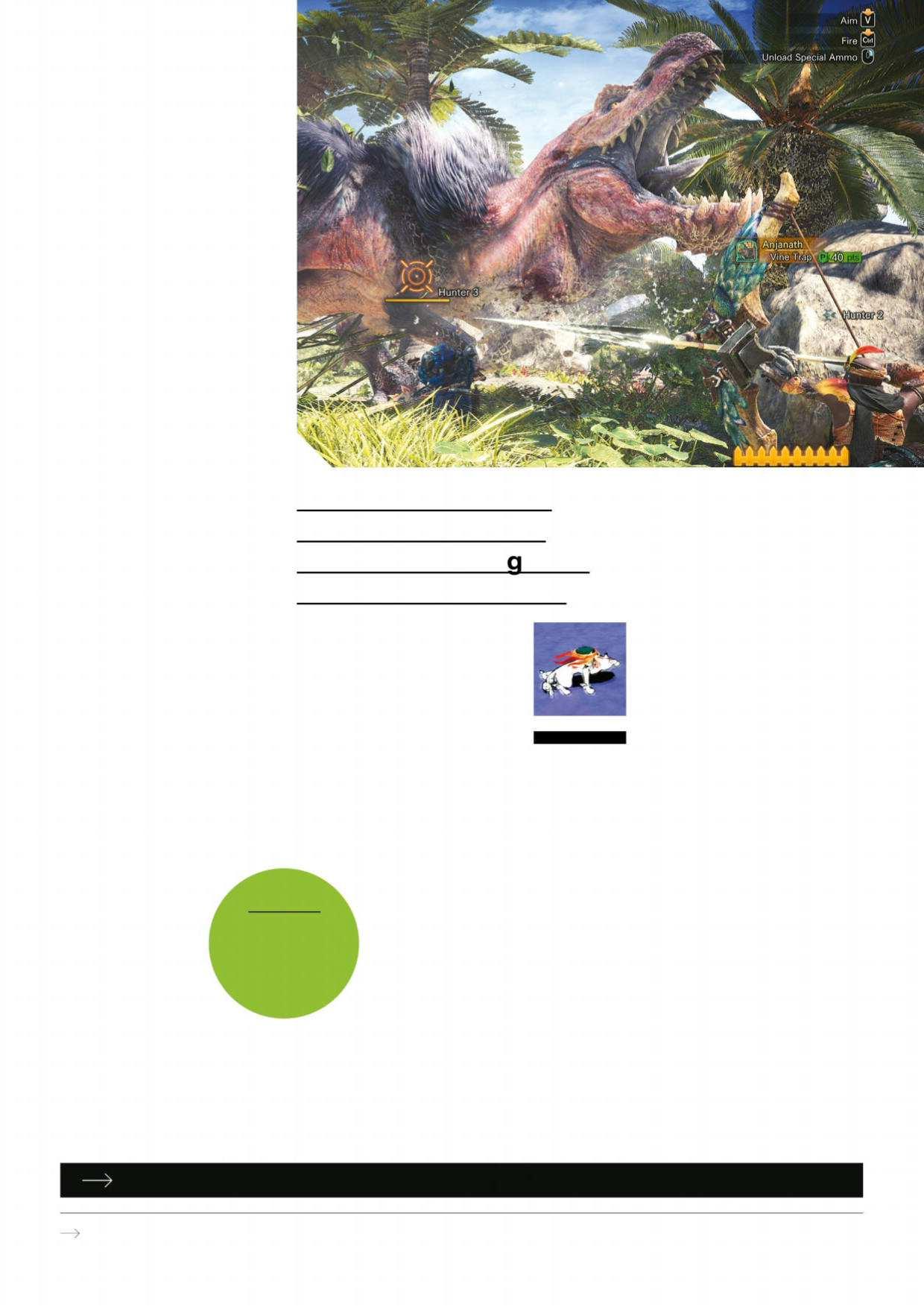
4 minute read
WHY I LOVE JAPANESE RPGS
The golden age of JRPGs wasn’t the 1990s: it’s now. Here’s why we should all immerse ourselves in their myriad joys STEVE BOXER
PUBLISHER VARIOUS / DEVELOPER VARIOUS / FORMAT XBOX ONE / RELEASE DATE VARIOUS
MAIN NieR: Automata is an imaginative, visual treat.
Call me a masochist, but I’ve spent entire months of my gaming life controlling ridiculously dressed characters, sporting the worst haircuts in the history of videogames, through gameplay which largely consists of battling slimy spacehoppers with the aid of an archaic turn-based control system which, if I’m honest, is so complicated that I only half-understand it. Sounds like madness, sure – but I can’t help myself. That’s because I’m hopelessly besotted by Japanese RPGs.
The JRPG has never been the most fashionable of genres, nor will it ever be. For me, that’s one of its many attractions. It’s a genre that has been around since the 1980s, and was derided as an anachronism 20 years ago. It’s like the Keith Richards of games genres, so regularly has its demise been predicted.
Yet the JRPG is thriving. Last year was one of the best in its 30-year history, thanks to the likes of Final Fantasy XV, while this year, we’ve already had Monster Hunter: World (not a typical JRPG but it is Japanese, and an RPG), NieR: Automata and Okami HD, which is simply one of the finest games money can buy.
However, there’s a minor hitch. JRPGs sometimes bypass the Xbox, mainly because they are, well, Japanese – so are primarily aimed at a market which has never fully embraced non-Japanese consoles. On the Xbox though we’ve had the Valkyria Chronicles games and Ys Origins; Xbox 360 titles Lost Odyssey and Blue Dragon are now both backcompatible on the Xbox One and well worth playing. The Disneyfied Kingdom Hearts III and the long-awaited remaster of Tales Of Vesperia are on the way too. Rising fun So more JRPGs than ever are coming to the Xbox One now, but what defines a JRPG? First and foremost there’s a visual style which could only possibly emanate from Japan – more often than not anime, and heavily influenced by legendary anime movie-house Studio Ghibli (the non-Xbox Ni no Kuni “Don’t be tempted to swallow the line that
JRPGs are niche ames for anime-geeks only” featured graphics created by Ghibli). Stir in a complex battle system, which lets you control all the characters in your party and includes some means of generating the mega-attacks required to take down huge bosses. Nowadays, most JRPGs have finally embraced real-time battle systems, although the odd one still employs a turn-based system to signify its retro-homage credentials. JRPG battle systems must be complex, employing bizarre terminology and a welter of potions, rings and amulets. Finally, sprinkle with a convoluted storyline which has absolutely no regard for glaring
WHAT IS IT? plot-holes and a bunch of embarrassinglyThe first recognisable JRPG was Dragon Quest, coiffured characters (the that had a big impact Japanese have a weird when released on NES relationship with hair), at in Japan in 1986. The least one of whom will be series has never been on Xbox,sadly. an insufferably annoying brat, and you have the basis of a JRPG. One thing I love about JRPGs is that they never require panther-like fast-twitch skills. They will test your strategic abilities to the limit, though: you’ll need to build up those superattack meters against the tougher opponents and time their deployment

ABOVE The gorgeous Okami was released in HD in 2017. MAIN Monster Hunter: World is one of our favourite games of the last year, and it’s Japanese and an RPG! to perfection, select your party members and inventory with care, plus pay attention to elemental attacks and the like. JRPGs require brainpower, not fast fingers. They also celebrate the power of the collective against seemingly impossible odds and venerate the underdog.
Then there’s the inevitable vein of utter weirdness you will find in any JRPG worth its salt. There’s the obsession with fishing. And you can bet that whatever enemy you’re battling will look preposterously outlandish. The Japanese may have a strait-laced image, but in reality, when it comes to generating pure fantasy, they are world-class.
JRPGs fulfil perhaps the greatest function of any type of videogame: to provide gloriously inviting fantasy worlds in which we can immerse ourselves for upwards of 30 hours (achieving the mythical 100-hour play-time has become something of an arms-race among JRPG developers recently), escaping the trials of real life, providing a gaming experience which is sufficiently soothing that you feel comfortable enough to surrender yourself to it for hours at a stretch.
Don’t be tempted to swallow the hackneyed line that JRPGs are niche games for anime-geeks only. Over the decades they have been collectively honed into one of the most substantial, accomplished and satisfying genres in the gaming world. If you classify yourself as belonging to the more cerebral end of the gamerspectrum, you’d be a fool not to check them out.










